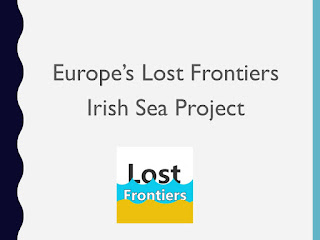Callanish (Re-visited)
At the end of last year we were invited to do some further
recognisance work in the Outer Hebrides at the iconic Callanish (Calanais)
standing stone sites. We had visited
these back in 2016 as part of surveys for the Ness Historical Society in
northern Lewis and were not only impressed by the stones and their setting but
a little surprised about the lack of any other significant historical sites in
the surrounding landscape. On return
from this trip I started to read more about the area and it turns out that
relatively few excavations have taken place here over the last 50yrs or
so. For those who have not visited the
sites then I can only urge you to do so.
So what was our job here?
We have two primary objectives for studies at Callanish.
- First we need to map the old landscape to enable us to understand where and how people might have used it.
- Second we need to investigate potential occupation sites, in other words, find the people in the landscape!
The stones are very different to those in the Orkney Isles
that we have been working on for the last few years. The primary rock at Callanish is the
beautiful, banded metamorphic Lewisian Gneiss.
At a little over 2.7 billion yrs old these are some of the oldest rocks
in the UK – their age is a testament to their surviving power. Deformed under numerous tectonic events they
are hard and resistant to erosion. Their
beauty, with swirling patterns of dark amphibole minerals coalescing into
augens (literally eyes), gives an additional sense of mystery to the standing
stones. The rock’s resistance to erosion
is another feature of the landscape that the Neolithic people would have had to
deal with. Unlike in the Orkney, where
stone is readily prised from the bedrock, Lewisian Gneiss does not break off
with the same ease. Rather, substantial
effort is required. This, along with the
soft curves of the standing stones suggests that this material was not quarried
in substantial quantities from the bedrock, rather at best it was prised from
the surface or picked up from where it had fallen. (for more on the creation of the Lewis
landscape as a function of successive glaciations see Dawson et al. 2016).
Palaeo-environmetal work in Lewis and Harris have shown that
prior to the re-peopling of the islands there was open woodland cover but with
increasing human activity around 3900yrs before present there was an expansion
of heather moor and the spread of grassland.
The latter possibly occurred as a result of fire and grazing. (Birks and
Madsen). The changes in vegetation and
the deterioration of weather further encouraged the growth of the peat that is
such a dominant part of the landscape today. In fact the peat growth is so
prolific that when the main standing stone site was first investigated in the
19th C over a meter of peat removal was necessary to expose the old
landscape. Electromagnetic surveying around site III indicates that this technique could well be used to map peat thickness.
 |
This result of the removal is
manifest by the weathering marks seen on old photographs of the site. The prolific peat growth is likely one of the
reasons that we do not know a lot more about this old landscape as it remains
deeply buried today. There is another
part of the landscape however and that is the one that has been lost to
sealevel change. As with many places
around the Scottish coastline the sealevels have risen significantly since last
glacial maximum. The story in the Orkney
Isles is fairly simple with a steady rise to about 4000 years ago when it
reached near enough present levels. In the Outer Hebrides it is a little more
complex with a sharp rise followed by slightly higher sealevel than today and
then a fall and rise again. Such a
complex signature is a result of the interplay between global sealevel and
local tectonics (that is the compensation for the pushing down affect of the
ice on mainland Scotland).
The field work was undertaken over three trips earlier in the year. Initially I visited with Mel
Chocholek and James Killingbeck in order to survey some of the lochs
surrounding the main site. At this time
we also undertook more photography for structure from motion 3D models of the
upstanding stones sites and tested electromagnetic ground conductivity
geophysics across some peat areas near the main stone circle. In January I returned to the site with Vince
Gaffney and Chris Gaffney from Bradford, James and Shiobhan Killingbeck, Tim
Raub from St Andrews and Fanny Bessard from Bristol. During this trip we concentrated on one site,
Callanish XI in order to test a range of geophysical methods for intense
survey. I will report on this site later. On Callanish X we scanned all the stones and this will shortly be rendered as a full 3D reconstruction of the site.
In late January I then returned
with my brother and Mel with the Swordsman
to conduct further offshore surveys and to acquire core data through some of
the sediment units.
This shows some of the sub-bottom profile data that indicates the area will have sediment that we can target for environmental information.







